Has your boat steering wheel stopped all of a sudden? Or, does it feel too weird to turn? If yes, you might want to keep reading this post because it looks like you’re facing a steering problem, and the causative factor can be complicated to pinpoint.
Below are the four typical boat steering problems for both mechanical and hydraulic steering system and tips on how to solve them. Let’s begin!
Table of Contents
Boat Steering Problems in Mechanical Steering System
The mechanical steering system, commonly used in smaller vessels, uses push-pull cables that connect the helm with the outboard motor. The mechanical steering system comprises three parts – rotary helm, steering cable, and engine connection kit.
The rotary helm is responsible for converting the steering wheel rotatory movement into push-pull action on the steering cable, which then moves the rudder accordingly. Likewise, the engine connection kit connects the outboard engine with the steering cable.
To get into details about each of these parts would be another article. Therefore, now let’s discuss what might be the potential issues that arise in these systems that eventually hold back your boat steering wheel from performing well.
Isolate the parts of steering:
If you aren’t sure what exactly is holding back your steering from turning smoothly, your best approach to this problem would be to start by isolating parts of the steering system. Separate the drag link from the steering link and turn the steering wheel.
If the cable moves, then the problem is in the motor unit, and if the steering wheel is easy to turn, but the cable isn’t moving, you’ll need to check for any issues at the helm.
1. Engine or rudder issues –Not enough grease
It would be best if you greased fittings located on the part of your motor shaft from where the motor pivots once every year for smooth functioning steering. If your steering is uncomfortable to turn around, it’s high time you grease it.
How to fix this issue?
Proper lubrication is truly essential when it comes to boat steering. It helps in keeping off salt water from seeping through your steering cables.
If annual greasing doesn’t work for you, you can add grease whenever you notice the area looks dry with no visible grease on it.
However, too much greasing is also not the proper way to handle the issue. There are grease cables that push the grease in between the bushing and the outer casing of the mounting bracket. Too much grease and jammed grease in this area stiffen the movement of the motor.
2. Tilt tube issues:
Likewise, sometimes, when the valves of these cables and tilt tubes, primarily intended to seal off saltwater become inefficient, saltwater might corrode the stainless steel cables, and grains of salt formed might clog it eventually.
How to fix this issue?
Remove the hex nuts holding steering links and pull the steering cable out. There are several motor cleaning and scrubbing tools available commercially, or you can use a drill motor to clean your tilt tube.
In case of successful cleaning, grease the tilt tube and steering cables, and reinstall them. If not, you might need to replace the cables. In case of confusion, take the advice of an expert on what to do next.
3. Issues in steering cables:
Quite a few of the many boat steering issues can be attributed to faulty steering cables. If you witness any damage, cracks, corrosion, cuts in the cable, or if they’re installed improperly, you’ll need to replace the cables entirely.
How to fix this issue?
Remember that in place of severe damage, replacing the cable is always better than trying to salvage these cables. When installing or replacing these cables, remember that you should do so as straight as possible for maximum smoothness.
Also, these cables shouldn’t be forced too tight around the corners, as it might result in inefficiency and issues way sooner given the increased frictions around the corners. The maximum bend allowed for steering cable around corners is an 8-inch radius.
If the problem persists despite you isolating the steering cable from the helm, the problem is in the helm.
4. Issues in the helm:
If you identify your boat helm as the problem, here is what you should do depending upon the type of helm your boat features.
If it is a rack and pinion, then check if there’s a bare spot on the rack or a stripped gear on the shaft.
How to fix the issue?
In case of a bare spot on the rack, it’s time for you to get a new cable and replace the gear if the gear on the boat steering shaft has been stripped.
Boat Steering Problems in Hydraulic Steering System
Instead of cables, hydraulic steering uses a hydraulic hose filled with a column of incompressible fluid in order to steer the boat. It is a lot easier to turn steering in a hydraulic steering system despite the size of the boat.
Moreover, given how a hydraulic steering system doesn’t come with too many metal parts as a mechanical system does, this steering system is relatively more resistant to corrosion.
The two major part of a hydraulic steering system is the helm and the cylinder. Helm constitutes of hydraulic pump and valves. The rotatory motion is the steering wheel is converted into push-pull action on the cable, which then directs the rudder right or left, changing the direction on the boat.
When the steering wheel is turned, the fluid is pumped from the helm, causing the cylinder to move. Hydraulic hose is responsible for carrying fluid from the helm to the cylinder and back to the helm. Let’s look at common hydraulic steering system issues:
1. Contamination in the hydraulic fluid:
If many components in your boat hydraulic steering have failed, check for contamination in the fluid. Bleed the lines and inspect if there’s any contamination in the hydraulic fluid. If yes, you’ll need to replace the fluid.
2. Leak issues:
Finding leaks in a hydraulic steering system requires you to know your boat and the steering system in detail. You’ll need to inspect around the helm, the transom, and the lazaret, for the hydraulic fluid on the deck.
Leaks are common where the hoses attach to the various component of the system. Therefore, it is a relatively daunting task to locate hydraulic leaks in larger vessels as the hoses are connected to multiple components and hydraulic equipment.
Moreover, there is also a high chance that there’s a leak on the end caps of your boat steering cylinder. The cylinder rods emerge from this part of the cylinder, and therefore it is imperative you check the rod routinely for nicks and leaks.
How to fix this issue?
Tighten any loose hoses and replace them if you notice any serious signs of damage. If the problem is in the cylinder end caps, you’ll need to replace them.
Nevertheless, make sure you inspect the stainless steel rod for any wear or damage, as servicing end caps despite the fact that rods are damaged would be worthless.
3. Air in the lines:
Air being a compressible fluid is not at all welcome in fluid lines in the hydraulic system. Therefore, air must be bled for your steering system to work properly.
How to fix this issue?
In order to bleed air out of your hydraulic fluid lines, you’ll need – multiple clear hoses, hose fittings, and two reservoirs.
Connect the first home from a hydraulic fluid container to the helm reservoir. Now, connect another hose from the cylinder to the same fluid container if your boat is small, or use a different container in order to catch the overflow from the cylinder.
Now, open steering cylinder valves and turn the wheel from lock to lock, back and forth. You must see fluid circulating in the hoses.
Keep an eye for air bubbles, as you must keep turning the wheel unless you see no air bubbles in the hoses. Once the air is removed, reverse the process to restore the regular hydraulic system.
4. Low fluid levels:
Remove the bolt on top of your boat’s hydraulic helm and check the fluid levels from time to time. Especially in case of leaks, you’ll notice that the hydraulic fluid level is much lower than usual. You should check this level routinely, especially if you’re heading out for an offshore trip.
How to fix this issue?
The solution is quite simple, refill your boat hydraulic fluid reservoir, and you should be good to go. Remember to add fluid in stages, i.e., turn the wheel several times during the filling process. Doing so will help bleed air.
Also, as leaks in your system might be aiding in decreased hydraulic fluid, you might want to inspect and repair leaks to solve low fluid level issues.
Summary
We believe you can easily solve your boat steering problem with the help of this guide. If not, or if you’re not sure of your handyman skill, we’d definitely recommend you visit a local boat repair shop.
In short, be it in hydraulic or mechanical steering, there are a few reasons why your boat steering won’t turn, and you need to display enough patience and care in order to diagnose and repair them successfully.
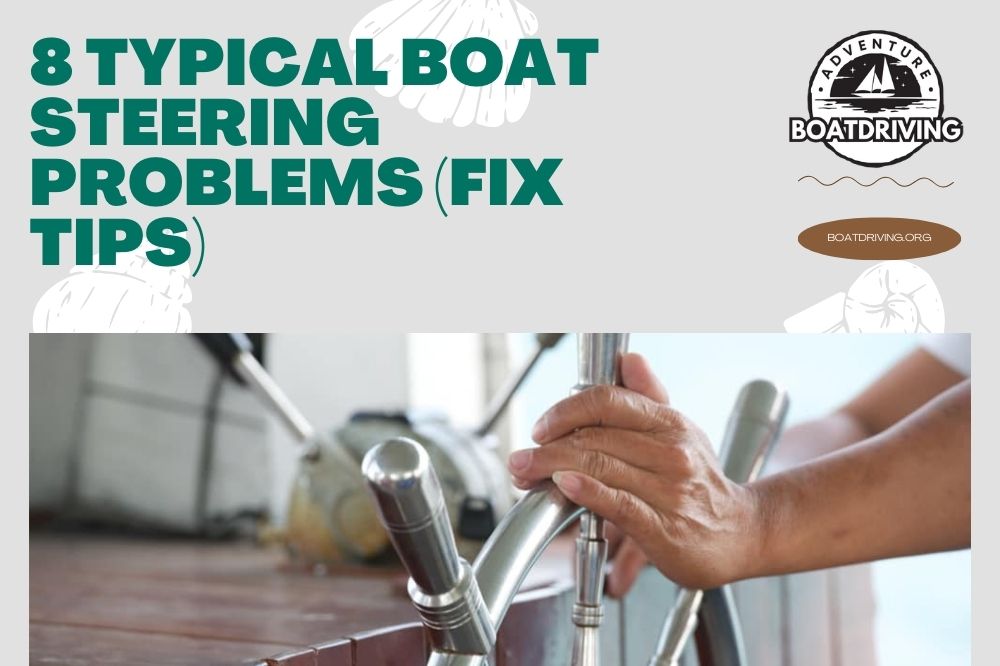
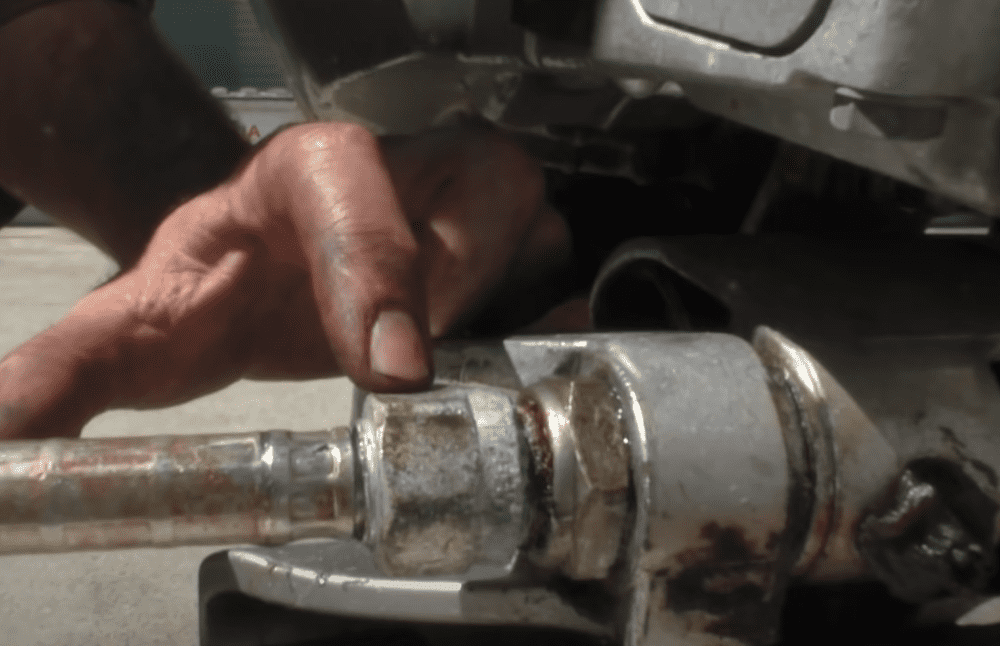
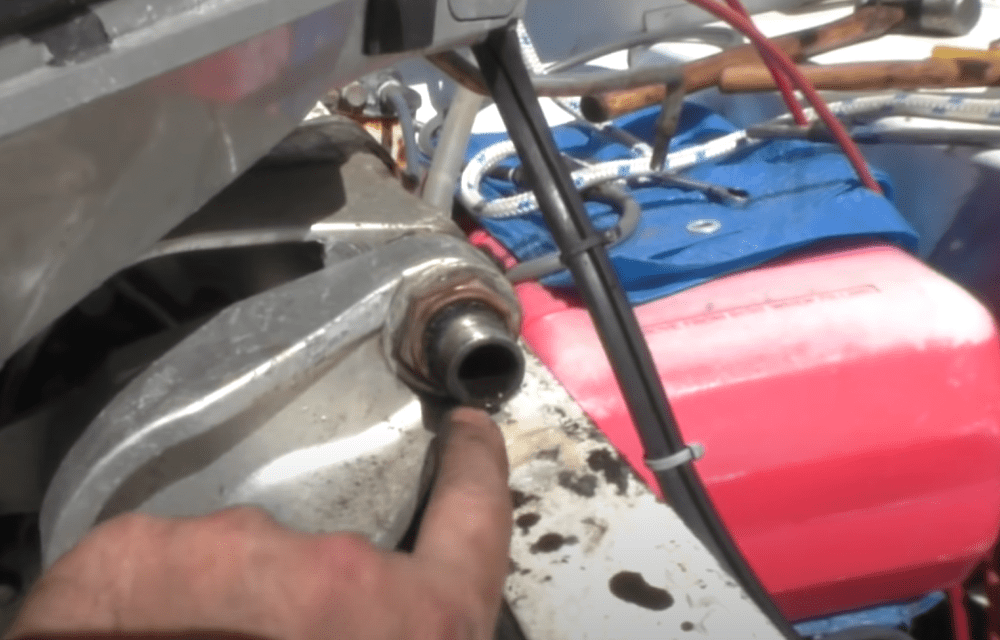
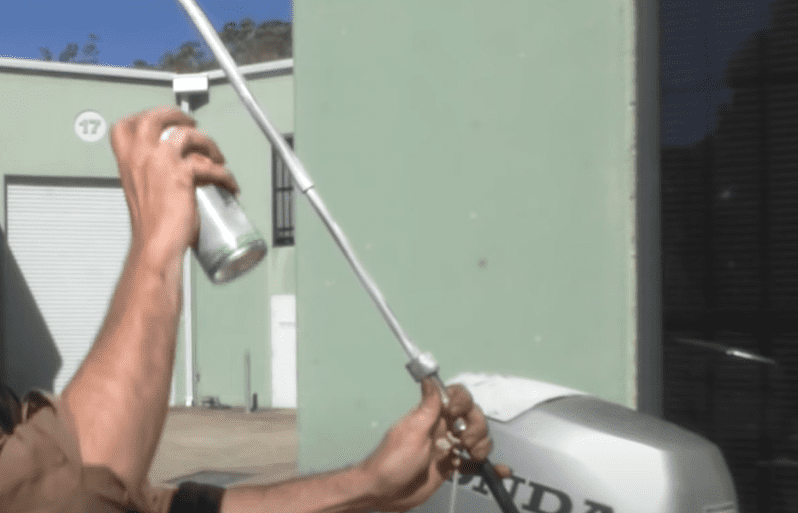
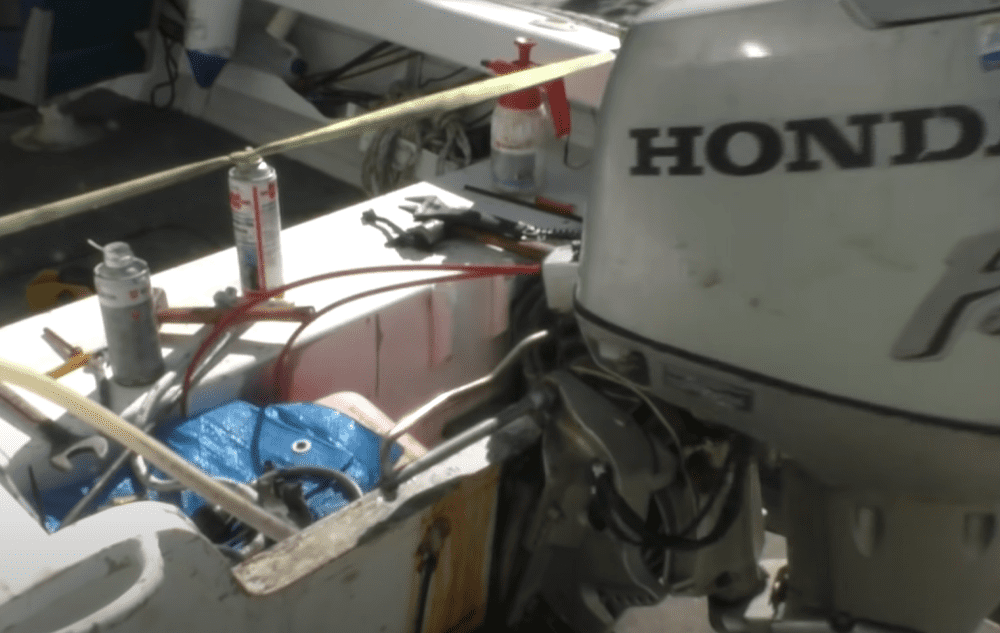
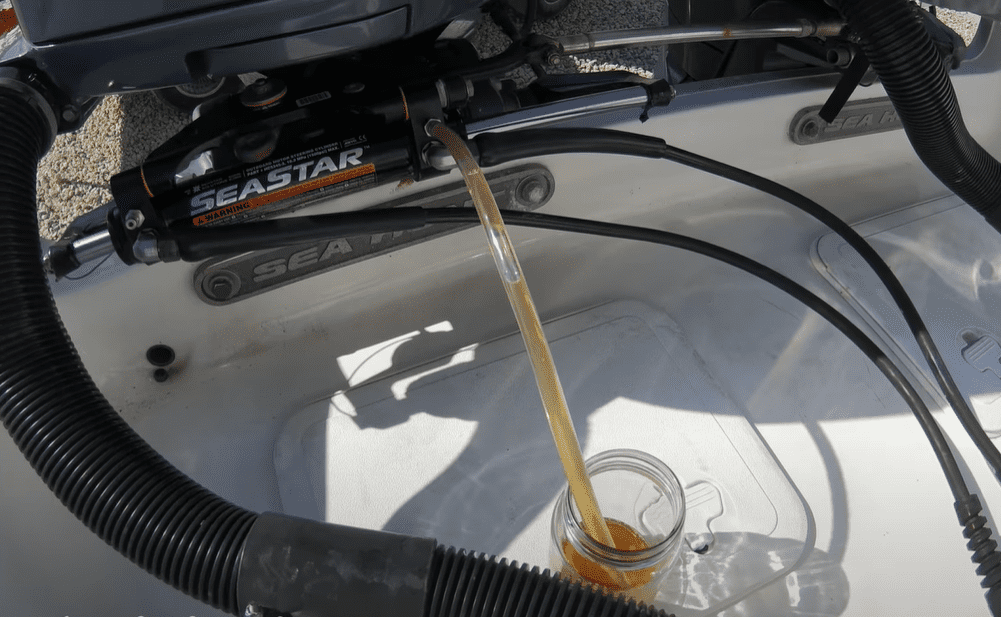
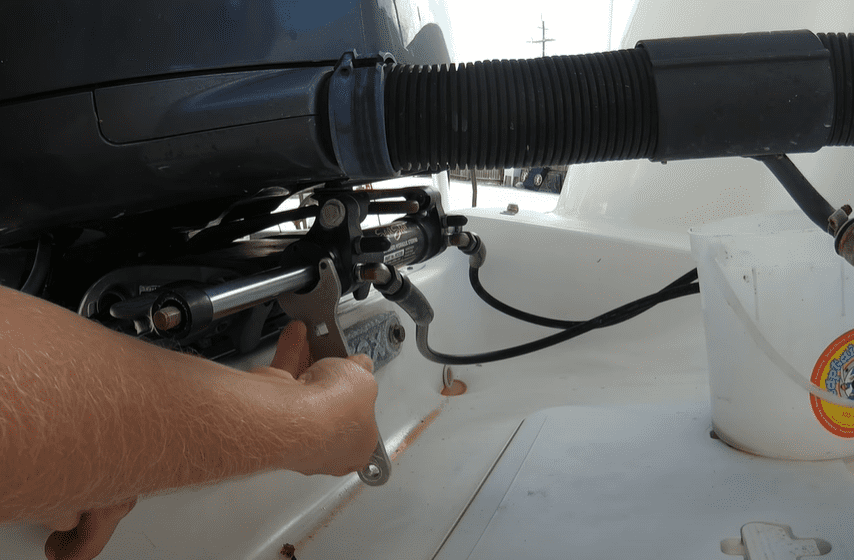
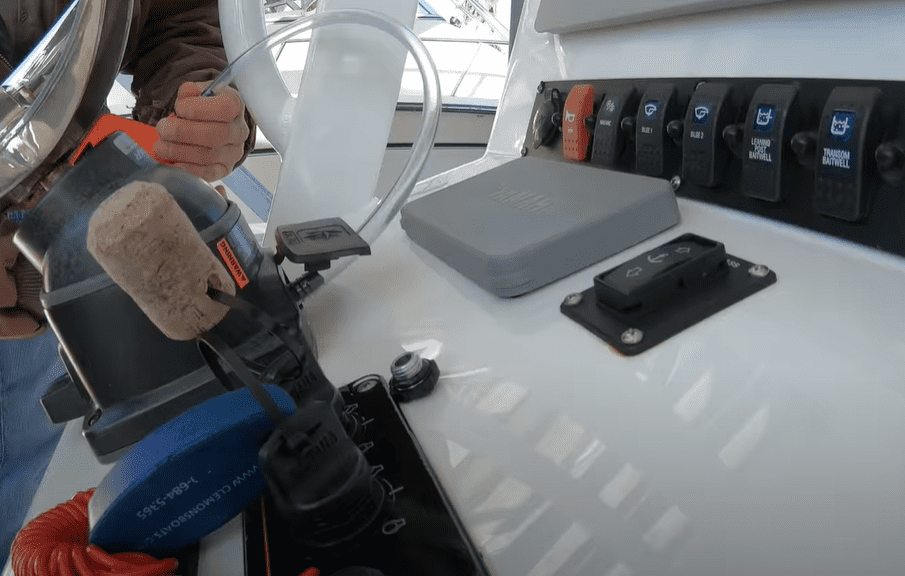
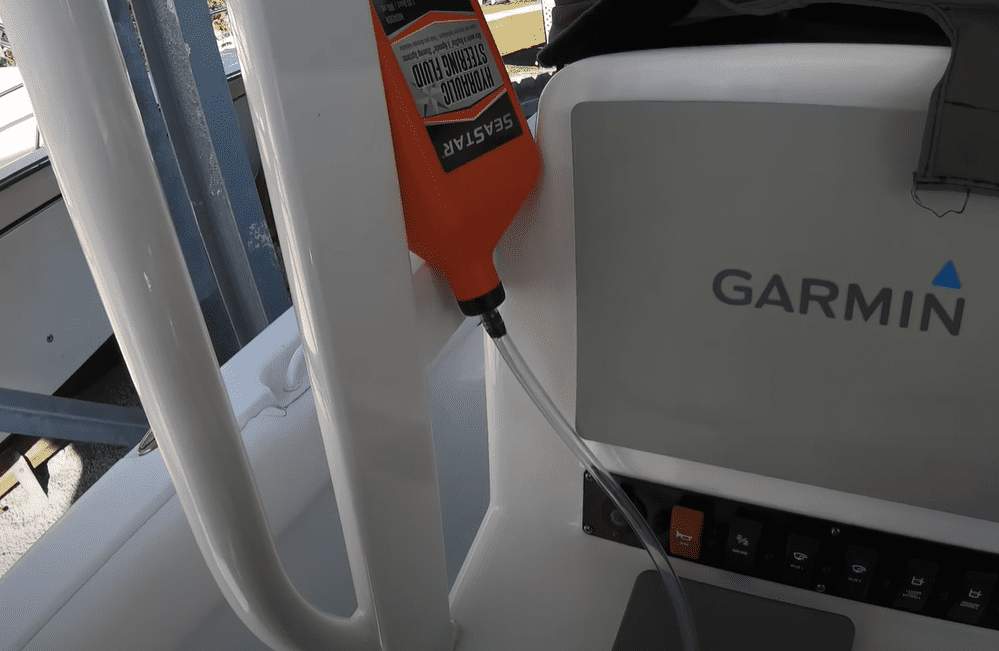
Hi. My son’s boat steering wheel constantly spins one way when traveling in a straight line (maybe 1 full turn every minute) It is hydraulic steering. Are you able to give me a reason why this is happening? I don’t have the system details but should be able to get them if needed.
Thanks in advance.
Cheers
Ray
I have a 1991 deck boat and when turning both way there is a clicking sound once. the steering is hard to turn also. can you help?